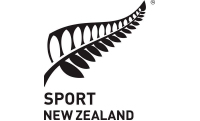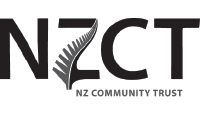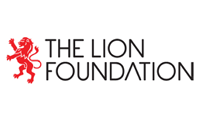Tū Manawa Active Aotearoa prioritises applications that focus on tamariki and rangatahi who are more at risk of missing out or being less active, including those living with a disability, in higher deprivation communities, girls and young women.
There must be evidence in your application that demonstrates the need you are proposing to fulfil and how you have used insights or the voice of those you intend to work alongside to shape your application.
These insights will help clarify why the project is needed, how you know the need exists, and who you have spoken to in designing your activity.
Some insights might be collected through research while others will directly access the voice of those who will be participants.
Taking an insights approach
Utilising an insights approach means that projects have a clearly defined problem that is shown by evidence, considered from the voice of the participant, and has a logical solution.
Problems are easier to solve when we understand the scope:
- Why is there a need for this project?
- Who does it benefit/who is affected?
- How do we know there is a problem? What evidence supports the justification of the problem?
- What isn't in our control?
- What factors are contributing to the problem?
If you have a clear vision for your project, this will be enhanced by being able to clearly articulate what problem the project is seeking to address, and who it is seeking to support.
Being participant-led
Being participant-led means that your work and project considers the needs, wants, concerns, experiences, and views of the people you work with and seek to support.
Consider:
- who do you already work with?
- who is involved in the targeted community or group?
- what is already happening in that environment that might be relevant to the problem or to your programme?
- how might you capture the experiences of those affected?
- how can their voice be involved in the planning and delivery of the programme
If you need to collate data, consider the following methods to gather further information:
- Interviews
- Questionnaires and surveys
- Focus groups
- Meetings and conversations
- Advisory group
- Observations
- Feedback from participants
- Community consultation
- Reflection on previous delivery
Capturing the voice of those you intend to work alongside, and using that to inform your application, will help ensure your project is participant-led.
Gathering Evidence
There are different types of evidence that you may use to support your project. You might consider using one or a combination:
- Research and literature
- Peer-reviewed articles
- Research reports
- National reports and local research such as ActiveNZ and Sport NZ Covid reports
- Needs assessment - what do we already know and how do we know it
- SWOT analysis
- Cost-benefit analysis
- Your own data such as;
- Quantifiable aspects of your project, Participation numbers, demographics (such as, age, ethnicity, sex, location, etc)
- Basic programme outputs such as membership numbers, new participants, retention rates, attendance
- Programme evaluation plan
- Previous programme reports with recommendations, findings or observations that may have supported you to reach your current thinking
- Good practice from other similar projects that might occur in a different context
- Feedback from partners and stakeholders
- Observations of behaviour
- Validated questions on well-being, confidence, and physical activity levels as part of your registration or programme evaluation
- Showing your impact
After you have identified the problem and the solutions, you will need to consider what impact you seek to achieve. This will help you to shape your outcomes which should be tangible and realistic. Consider, how will you know if you are successful?
Types of measures you could use include:
- Baseline measure (pre/post/during)
- Process measures
- Outcomes measures
- KPIs
- Case studies
- Videos
Finding your solution
Once you have a clear idea of the problem, consider how your work will directly contribute towards your proposed solution.
- Consider if you will work with other stakeholders and influencers and how they might share your vision, or have some shared outcomes, will others be benefited indirectly?
- Can you determine the source of the problem, not just the symptoms? This may be complex but gives you an understanding of which aspect you can address and seek to change.
An Example of insights gathering for the target group: girls & young women
Identification of need:
Population-level data shows women and girls are less physically active than the regional average. In Wellington, an informal rock climbing group for women and girls has grown in popularity recently. Two instructors formed an advisory group with three of the young women who had started participating regularly. The group were better able to understand the women and girls experiences and asked them to engage with the club to create free “have-a-go" sessions for others.
To understand better the advisory group asked the participants what barriers they and others experienced, these included:
- Having few entry points to participate in the activity
- Few female-only intro sessions with a female instructor
- Low confidence engaging with typically male-dominated events, feeling out of place
- Limited avenues to develop skills relevant to their current ability
- Being evidence & participant-led:
Intended outcome:
Opportunities to engage in rock climbing better meets the needs of women and girls resulting in increased participation
Measure:
- Attendance at “have-a-go” sessions
- Women and girls membership to regional club/group compared to baseline
- Feedback from participants (enjoyment, belonging, skill development)
- Feedback from instructors and practitioners
- Data collection:
- Attendance registers/club membership
- Member survey
- Interviews
Need more help?
We recommend you get in touch with our Tū Manawa team before submitting your application









